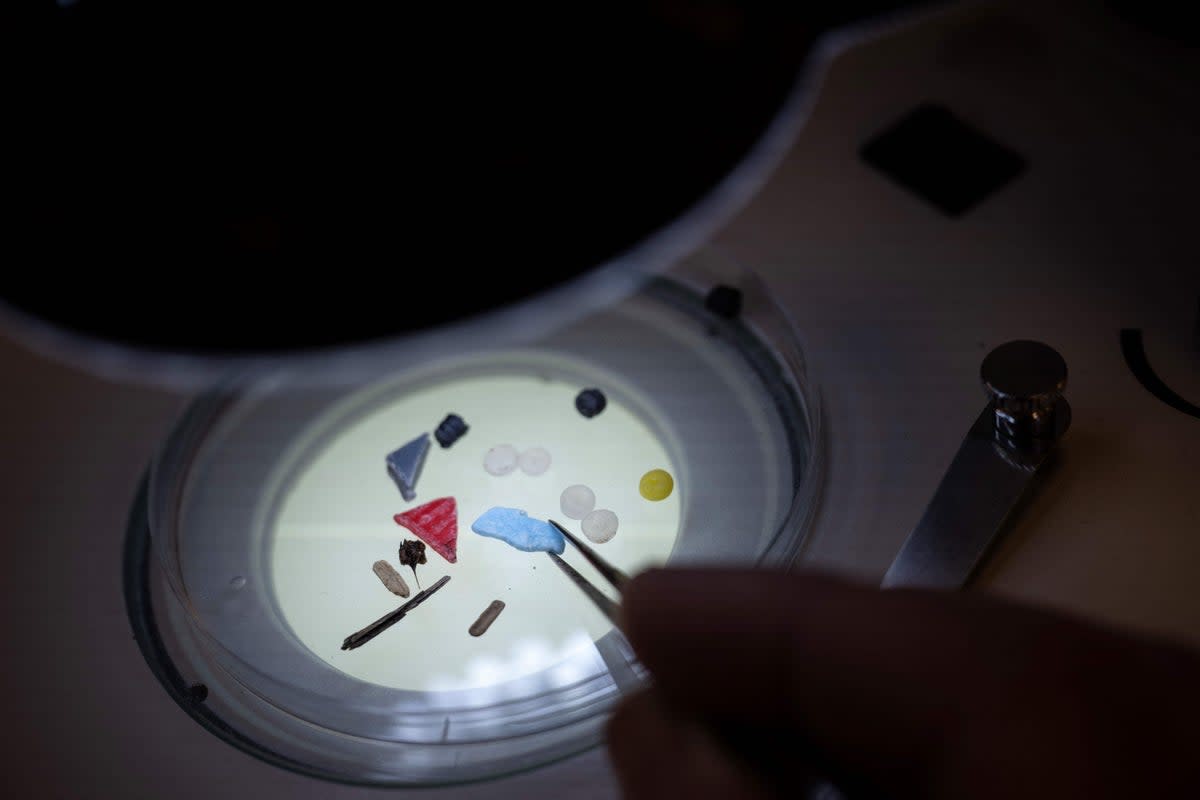Microplastics found in every dog and human testicle examined by scientists

Microplastics are breaching the “most intimate aspects of human health” as scientists find the dangerous tiny particles in testicles, raising concerns about male fertility.
Researchers at the University of New Mexico examined 47 canine and 23 human testes taken from neutering operations and cadavers.
They found that every testicle sample contained microplastics.
Microplastics are tiny plastic particles that are less than 5 millimetres across, about the size of a sesame seed or smaller. They are released from larger pieces of plastic that break down over time as well as from synthetic fabrics, cosmetics and industrial processes.
In recent years, scientific studies have shown microplastics are present everywhere, from the water we drink to the food we eat and even inside human organs.
Now scientists are worried that by getting into our reproductive organs, microplastics can have an impact on fertility in human beings.
The researchers found that the most prevalent polymer in both human and canine tissue was polyethylene, which is used to make plastic bags and bottles. In dogs, that was followed by PVC, which is used in industrial, municipal and household plumbing and many other applications.
The research was published in the journal Toxicological Sciences last week.
The researchers were able to count the sperm in the canine samples but not in the human ones, which had been chemically preserved. They found that higher levels of PVC in the tissue correlated with a lower sperm count.
Dr Xiaozhong Yu, the lead author of the study, said there is a correlation between microplastics and fertility but more research is needed.
“At the beginning, I doubted whether microplastics could penetrate the reproductive system,” Dr Yu said.
“When I first received the results for dogs I was surprised. I was even more surprised when I received the results for humans.”
“The plastic makes a difference – what type of plastic might be correlated with potential function,” he said.
“PVC can release a lot of chemicals that interfere with spermatogenesis and it contains chemicals that cause endocrine disruption.”
Decreasing sperm count in men has been an issue in recent years and a number of studies in the past have connected it to increasing pollution.
The health, and existence, of future generations depends on our ability to innovate and transition away from our addiction to plastic.
Sian Sutherland, co-founder of A Plastic Planet and the Plastic Health Council
Microplastics have been found in every corner of the planet, from the highest mountain peaks to the deepest of oceans.
Environmentalists have been demanding a ban on the production of single use plastic and there’s a debate going on over an international effort to create the first legally binding treaty about how the world tackles plastic.
“Microplastics are infiltrating the most intimate aspects of human health, adding to an ever-growing list of places where scientists have identified them,” Sian Sutherland, co-founder of A Plastic Planet and the Plastic Health Council, said.
“The question we must ask ourselves is: what will it take for us to rethink our relationship with plastic? Is the prospect of sperm counts falling to zero by 2045 enough to kick us into action? The health, and existence, of future generations depends on our ability to innovate and transition away from our addiction to plastic.”

